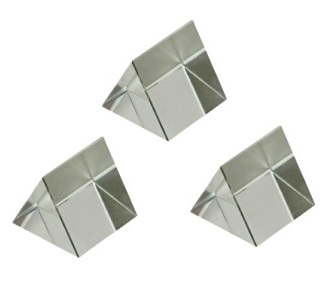
Types of Glass Prisms used in the Optics Lab!
Glass Prisms are used in the Physics Optics Lab to help the researcher deal with a few experiments on the property of light/optics. A glass prism is an object that has triangular ends and rectangular sides on the three other sides. These objects usually help n understanding processes like refraction of light. Thus, it is different from glass slab which helps in understanding about reflection of the light ray.
These also help in understanding refraction phenomenon of the light ray where the incident ray is not parallel to the emerging ray of light.
Whenever you are looking for glass prisms, you are supposed to look for the angle of the product and also the material. They are utilized for other purposes like depolarization and polarization, dual channel instruments and image orientation.
Prisms are based on the function they do and they are:
~ Deflection
~ Dispersion
~ Reflection
~ Offset
~ Rotating
The offset, deflection and rotating prisms are mostly used in imaging while the diffusion prismsare for light sources with dispersion and are not suitable for phenomena that need a very high quality images.
They are also based on the shapes like polygonal, pentagonal and dove. Polygonal one help in the light ray get deflected at a certain angle such as 45, 60, 90 and 180 degrees. The Pentagonal type helps the light to always deflect at 90 degrees no matter what the axis is at. They are mainly used for laser scanning, measurement and for other optical processes.
The Dove featured helps to invert the image and is made of a truncated right angle prism. This is quite an interesting feature where the prism rotates in the longitudinal axis. This prism is also used in beam rotators and is used in astronomy and pattern recognition.
The Right Angled: These prisms are used mainly as mirrors that are used to deflect the light by 90 degrees. They allow the light ray to only pass as total internal reflection if it passes through 180 degrees. They are used to find out the total internal reflection, critical angle etc.